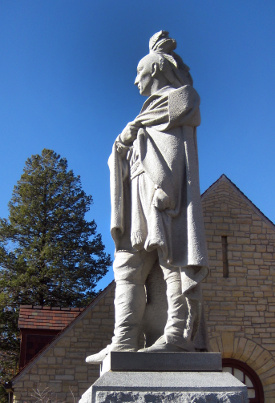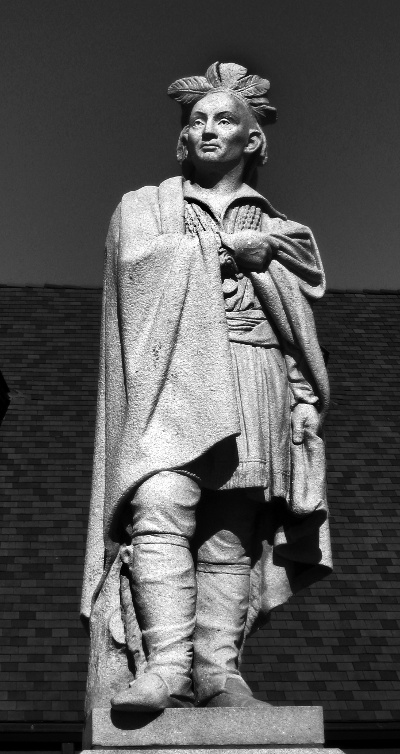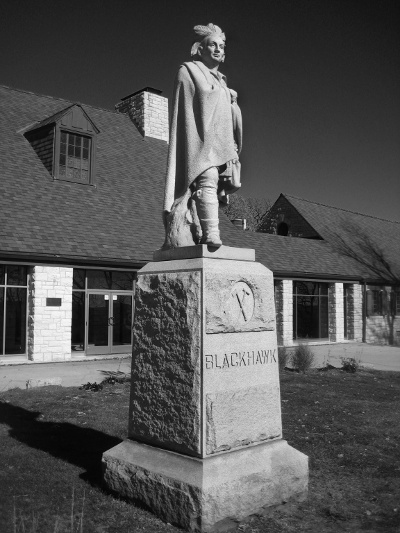(Editor's note: This is the first in an occasional series on the history of public art in the Quad Cities.)
 Standing on a ridge overlooking the Rock River, an 18-ton granite statue of Black Hawk dominates the space before the Watch Tower Lodge at the Black Hawk State Historic Site (1510 46th Avenue in Rock Island). This is near the location of the Native American village Saukenuk, the largest settlement in Illinois when it became a state in 1818. The statue's commanding presence tells us that this was a man of great importance.
Standing on a ridge overlooking the Rock River, an 18-ton granite statue of Black Hawk dominates the space before the Watch Tower Lodge at the Black Hawk State Historic Site (1510 46th Avenue in Rock Island). This is near the location of the Native American village Saukenuk, the largest settlement in Illinois when it became a state in 1818. The statue's commanding presence tells us that this was a man of great importance.
At the age of 65, Black Hawk led more than 1,000 men, women, and children in an attempt to reclaim Saukenuk, their former village. War was declared on them in 1832 when they crossed the river from present-day Davenport. The war ended with his capture and the massacre of hundreds of Native Americans trying to cross back over the river. This was the last Indian war fought east of the Mississippi. Black Hawk died in 1838.
In the early 1890s, Chicago sculptor David Richards (1829-1897) carved the sculpture freehand and without measurements. It stood in Spencer Square in downtown Rock Island until 1954, when it was moved to its present site.
Over the years, Black Hawk's name has proliferated: A community college, bank, and hotel are among the many Quad Cities businesses and institutions named after him. So are professional sports teams in the NHL and NBA (the Atlanta Hawks franchise played here from 1946 to 1951 under theTri-Cities Blackhawks banner), as well as a helicopter, a motorcycle, an automobile, and a bewildering range of consumer products. Iowa was nicknamed the Hawkeye State in his honor. Several naval vessels have been named USS Black Hawk. There is even a Black Hawk voodoo cult.

With such a legacy, it's not surprising that the overall height of the sculpture with its pedestal is imposing. But, remarkably, Black Hawk is not depicted as a warrior. His countenance is confident, not fierce. His gaze seems directed to a distant horizon, not fixed on an enemy. In many ways, the artist sculpted an emperor or deity from antiquity with Native American clothing and headdress. Yet when looking at the figure itself, it is almost surprising that it is only life-sized (Black Hawk was about five-foot-eight), and the clenched left hand has a very human quality. One of the treasures of the Quad Cities, the sculpture conveys a sense of the subject's esteem, yet still allows us to discover a real person within.
Bruce Walters is a professor of art at Western Illinois University.











